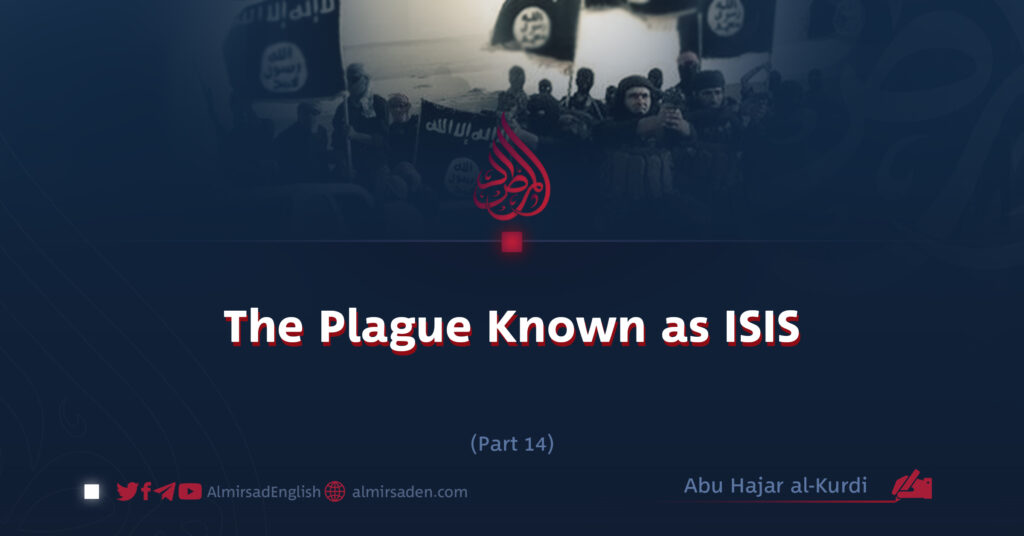Part 14
Written by: Abu Hajar al-Kurdi
In the preceding section, the strategic location of Al-Hajar al-Aswad was discussed. The following segment will provide a brief overview of ISIS’s occupation of this region.
In April 2015, ISIS criminals initiated a sudden assault, facilitated by some local informants, allowing them to enter Hajar al-Aswad.
Using deception and misleading slogans, they swiftly gained influence among the people. Prior to ISIS’s entrance, this town was under the control of the Jabhat al-Nusra Mujahideen, posing a significant threat to Bashar al-Assad’s regime.
Consequently, the Nusayri regime deployed all its intelligence and supply resources to dislodge the Mujahideen, aiming to bring tranquility to its forces.
Subsequent to the invasion and seizure of Al-Hajar al-Aswad, ISIS martyred numerous opponents of the Syrian government, which included members from Aknaf Bait al-Maqdis (a Palestinian faction in the Yarmouk Camp) and other indigenous factions, utilizing toxic and deceitful means to spill the blood of distinguished Muhajir and Ansar Mujahideen.
Research indicates that subsequent to their incursion, ISIS carried out the execution of more than 200 Mujahideen and left numerous children orphaned. Instead of leaving a positive impact, ISIS took pride in its violent actions against Sunni youths. Their purported “achievements” in Syria and Iraq have only served to undermine the Mujahideen and the broader jihadist movements.
The purpose of establishing ISIS has been to portray Islam negatively—a portrayal that the enemies of Islam promote in their gatherings as they attempt to depict Islam as inherently violent. These scenes are orchestrated by spreading the actions of mercenary criminals within ISIS, whose deeds are publicized and highlighted.
